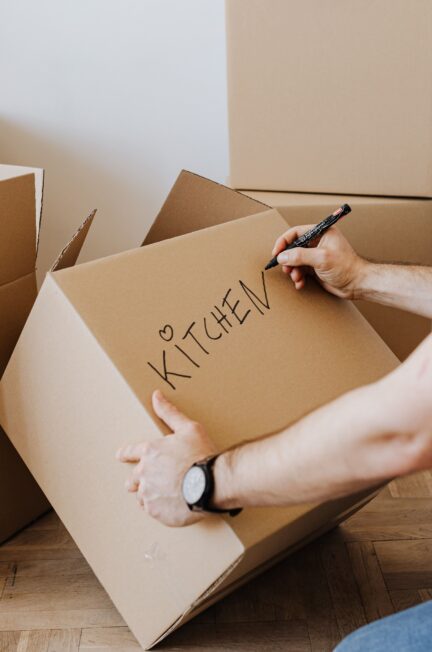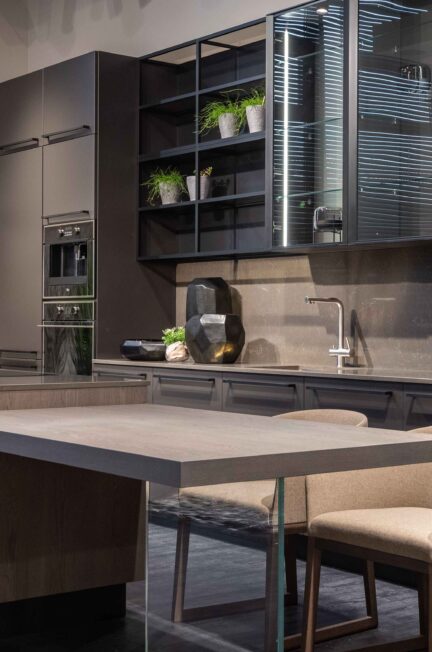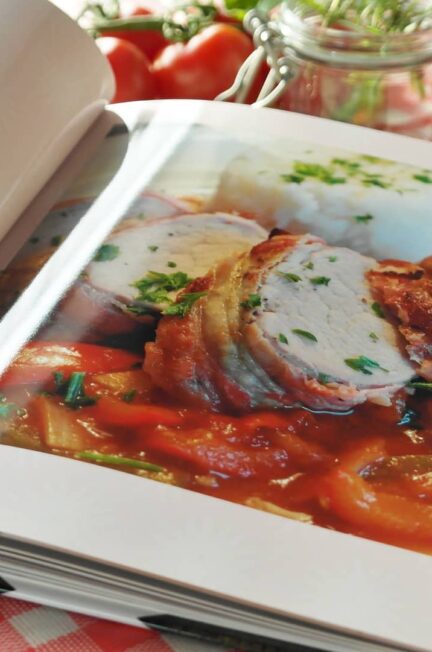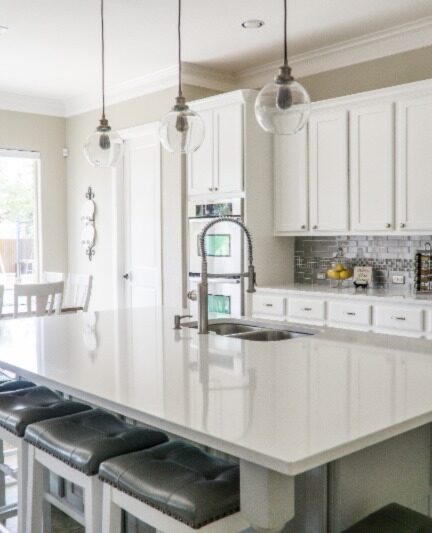Moving can be a stressful time, especially when it comes to packing up your kitchen appliances. How do you ensure that your valuable appliances make it to your new home in one piece? The key is to pack them properly to prevent any damage during the move.
How To Pack Kitchen Appliances For Moving?
In this blog, I will share some expert tips and tricks on how to pack your kitchen appliances for moving. From small appliances like blenders, toasters, and coffee makers to larger ones like refrigerators and ovens, I will guide you through the process step by step.
By following these instructions, you can have peace of mind knowing that your appliances will be safely transported and ready to use in your new kitchen. So let’s get started and make your moving experience a smooth one!
Gather Packing Supplies
The first and most important step in making a smooth transfer for your kitchen appliances is to gather the necessary packing materials. Here is a list of the main packing supplies you will require:
- Cardboard Boxes: Choose boxes of various sizes to suit various kitchen gadgets. Check that they are in excellent shape and that they can support the weight of the things being packed.
- Packing Paper: Wrap and preserve delicate surfaces such as glass doors or stainless steel finishes using plain, unprinted packing paper.
- Bubble Wrap: Excellent for cushioning and stress absorption, particularly for fragile components such as control panels or electronic displays.
- Packing tape: Use high-quality, long-lasting packing tape to fasten boxes and keep their contents intact throughout shipment.
- Marker Pens: Label the boxes with the contents and any specific handling recommendations using permanent markers.
It is critical to choose suitable box sizes when packaging kitchen appliances. Larger and Heavier items, such as refrigerators and ovens, should be placed in boxes that fit them firmly and allow for a little movement. This reduces the danger of damage by preventing shifting during shipment.
Smaller items, such as microwaves or blenders, should be packed in appropriate-sized boxes and enclosed by protective coverings to avoid banging around during the transfer. Remember that utilizing the proper box sizes and appropriate padding will help protect your precious kitchen equipment and guarantee they arrive in perfect shape at your new home.
Clean And Prepare Appliances For Packaging
To guarantee a smooth and hygienic moving procedure, clean and prepare your kitchen Items thoroughly before packing them. What you must do is as follows:
- Thorough Cleaning: Clean the inside and outside of your appliances to remove any food residue, stains, or spills. Before packing, clean them with a light detergent and water and make sure they are completely dry. This prevents mould and bad odours from growing during shipment.
- Detachable pieces and Accessories: Remove any detachable pieces, such as shelves, racks, or trays, and pack them separately. This keeps them from moving during the journey and reduces the possibility of injury.
- Wrapping Fragile Components: Use bubble wrap or packing paper to protect appliances with delicate components such as glass doors or control panels. Tape the packaging to keep it in place during transit.
Use Original Packaging Whenever Possible
When packing for a move, one of the best methods to protect your kitchen equipment is to use its original packaging as much as possible. These boxes are manufactured with a perfect fit to ensure optimal protection during transportation. Here are some of the advantages of using the original packaging:
- Custom Fit: The original boxes are made to fit the precise dimensions of the appliance, eliminating movement and the danger of damage.
- Custom-moulded Styrofoam inserts are included in many original boxes. These inserts surround the appliance while moving it, offering improved cushioning and stress absorption.
- Cardboard Inserts: Some appliances, such as ovens or microwaves, contain cardboard inserts that protect delicate components such as glass doors or control panels.
- Convenience: Original packaging frequently contains dedicated compartments for accessories, wires, and user manuals, ensuring that everything stays intact during the process of shifting.
If the original packaging is no longer available, try obtaining specialty packing boxes built specifically for kitchen equipment. While various packing materials can offer some protection, nothing beats the customized fit and enhanced security of the original packaging’s Styrofoam or cardboard inserts. Your appliances will arrive in the same condition as when you purchased them, providing you with peace of mind during the move.
Wrapping With Packing Paper and Bubble Wrap
Wrapping kitchen appliances with packing paper and bubble wrap is an important step in assuring their protection during a transfer. Here’s a step-by-step method to protecting your appliances:
- Clean and Dry: Before wrapping, make sure the appliances are clean and dry to avoid trapping dirt or moisture during the packaging process.
- Begin with Packing Paper: Wrap the appliance in simple packing paper. Protect any surfaces from scratches and moderate impacts by covering them.
- Tape the paper in place using packing tape, ensuring sure it’s properly attached to eliminate any loose ends.
- Add an Extra Layer of Bubble Wrap: Add an extra layer of bubble wrap over the packing paper for fragile appliances or products with glass or sensitive components. Additional cushioning and shock absorption will be provided by the bubble wrap.
- Tape it again to ensure that the bubble wrap does not move during travel.
By following these steps, you can rest assured that your kitchen appliances are well-protected from scratches, minor damages, and potential breakage. The combination of packing paper and bubble wrap offers a reliable defence against the bumps and jostles that can occur during transportation.

Securely Place Appliances in Boxes
After wrapping your kitchen appliances with packing paper and bubble wrap, the next crucial step is to securely place them in boxes. Here’s how to do it effectively:
- Select Appropriate Boxes: Choose durable cardboard boxes that are somewhat larger than the wrapped appliances. To save extra transportation, avoid big cartons.
- Arrange the wrapped appliances in the boxes so that they fit tightly without taking up too much excess room. This decreases the possibility of shifting while in transportation.
- Fill Gaps with Packing Paper or Bubble Wrap: Fill any gaps between the appliance and the box walls with additional packing paper or bubble wrap. This additional padding will keep the appliance steady and prevent it from shifting within the box.
- Close the Box Securely: Once the appliance is in position and any holes have been closed, seal the box with strong packing tape. Reinforce any seams to ensure the box stays together.
It is critical to properly place and secure the appliances within the boxes for their safety. A well-fitted, solid packing minimizes the risks of damage caused by movement or collisions, ensuring that your kitchen appliances arrive in perfect shape at your new home.
Label Boxes Clearly
Labelling each box properly is an important step in the moving process, especially for kitchen equipment. Here’s why it’s necessary and how it will assist your move:
- Identification of Contents: Labelling each box clearly with the contents helps you and your movers to immediately identify what’s inside. This is especially useful during unpacking, as it saves time and effort in identifying certain goods.
- Fragile Items: Labelling any boxes that contain fragile kitchen appliances or sensitive components as “Fragile” guarantees that they receive extra attention and care throughout the journey.
- Mover Awareness: Clear labelling tells movers about the contents of each box. They will take extra measures when they notice the “Fragile” label, lowering the danger of mistreatment and potential damage.
- Efficient Unloading: When boxes are properly labelled, the movers can store them in the right rooms of your new house. This simplifies the unpacking process and eliminates misunderstanding.
By correctly labelling your boxes, you can assist guarantee that your kitchen equipment receives the care and attention they require during shipping. It fosters a more seamless moving experience and increases the likelihood that your appliances will arrive in perfect shape at your new home.
Consider Professional Moving Services
Consider hiring expert movers, especially if you have sensitive kitchen appliances. Experienced movers have the knowledge and equipment needed to treat appliances with care throughout the moving process. Some advantages of receiving professional assistance involve:
- Safe Handling: Professional movers understand how to pack, lift, and carry equipment safely, reducing the danger of damage or accidents.
- Specialized Tools and Equipment: They have specialized tools and equipment to safely lift big and bulky appliances.
- Insurance: Reputable moving firms provide insurance coverage, which provides financial protection in the event of an unpleasant situation.
- Time and Efficiency: Hiring specialists save you time and energy by assuring a smooth and efficient move, enabling you to focus on other parts of the relocation process.
Conclusion
Finally, correctly packaging kitchen equipment is critical for a smooth and damage-free moving experience. To summarize the steps:
1. Create an appliance inventory and gather necessary packing items, such as robust boxes, packing paper, bubble wrap, packaging tape, and marker pens.
2. Clean and prepare appliances for separate packaging by eliminating removable components and accessories.
3. For the best protection, use the original packaging, including Styrofoam or cardboard inserts, if feasible.
4. Wrap fragile things in packing paper and add an extra layer of bubble wrap.
5. Wrapped appliances should be securely placed in appropriate-sized boxes, with gaps filled with packing materials for increased stability.
6. Label each box clearly with its contents and “Fragile” as necessary.
7. Consider hiring experienced movers that have handled sensitive kitchen equipment before for safe and fast shipping.
Remember to read and adapt this information to your shifting requirements. Taking the time to carefully pack your kitchen equipment will guarantee that they arrive in perfect shape, ready to serve you once again.
Refer to reliable moving business websites, home improvement manuals, and official government resources for a thoroughly moving experience for more information on moving tips and professional guidance.



